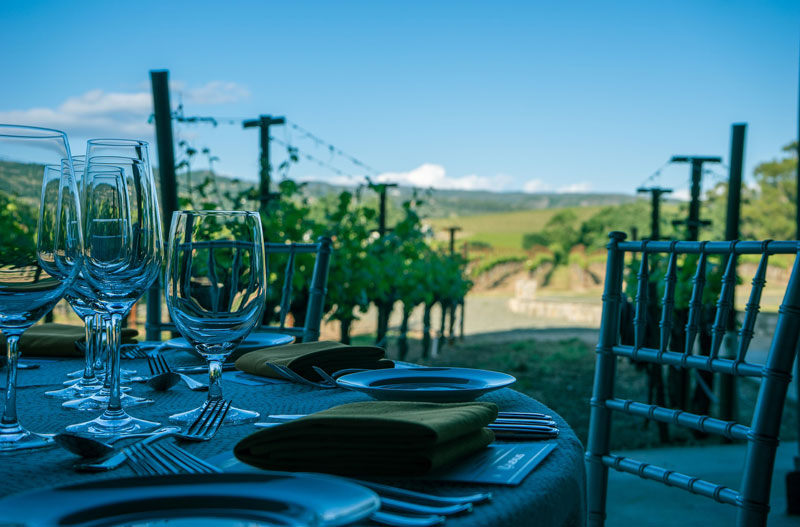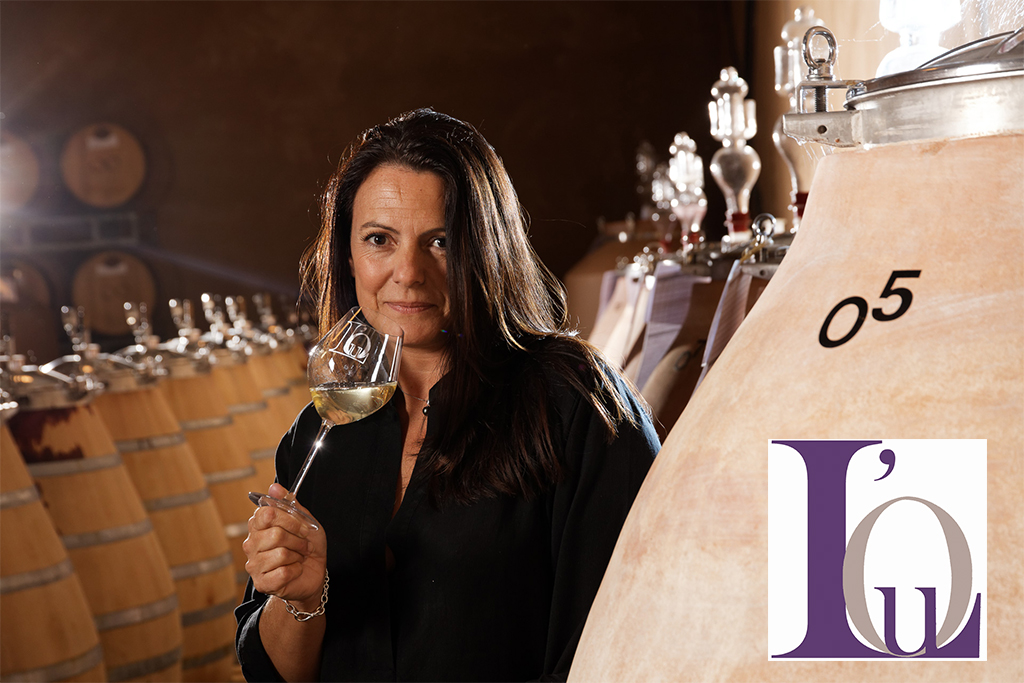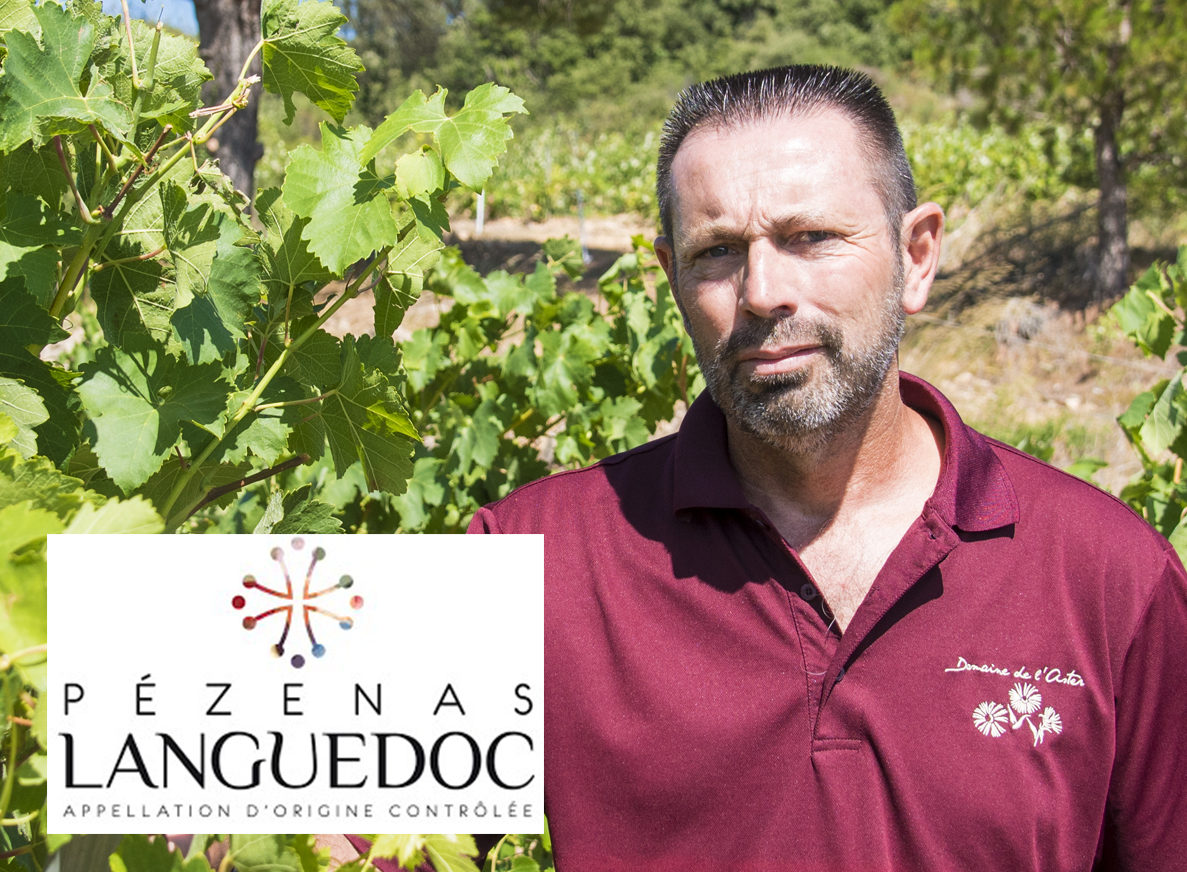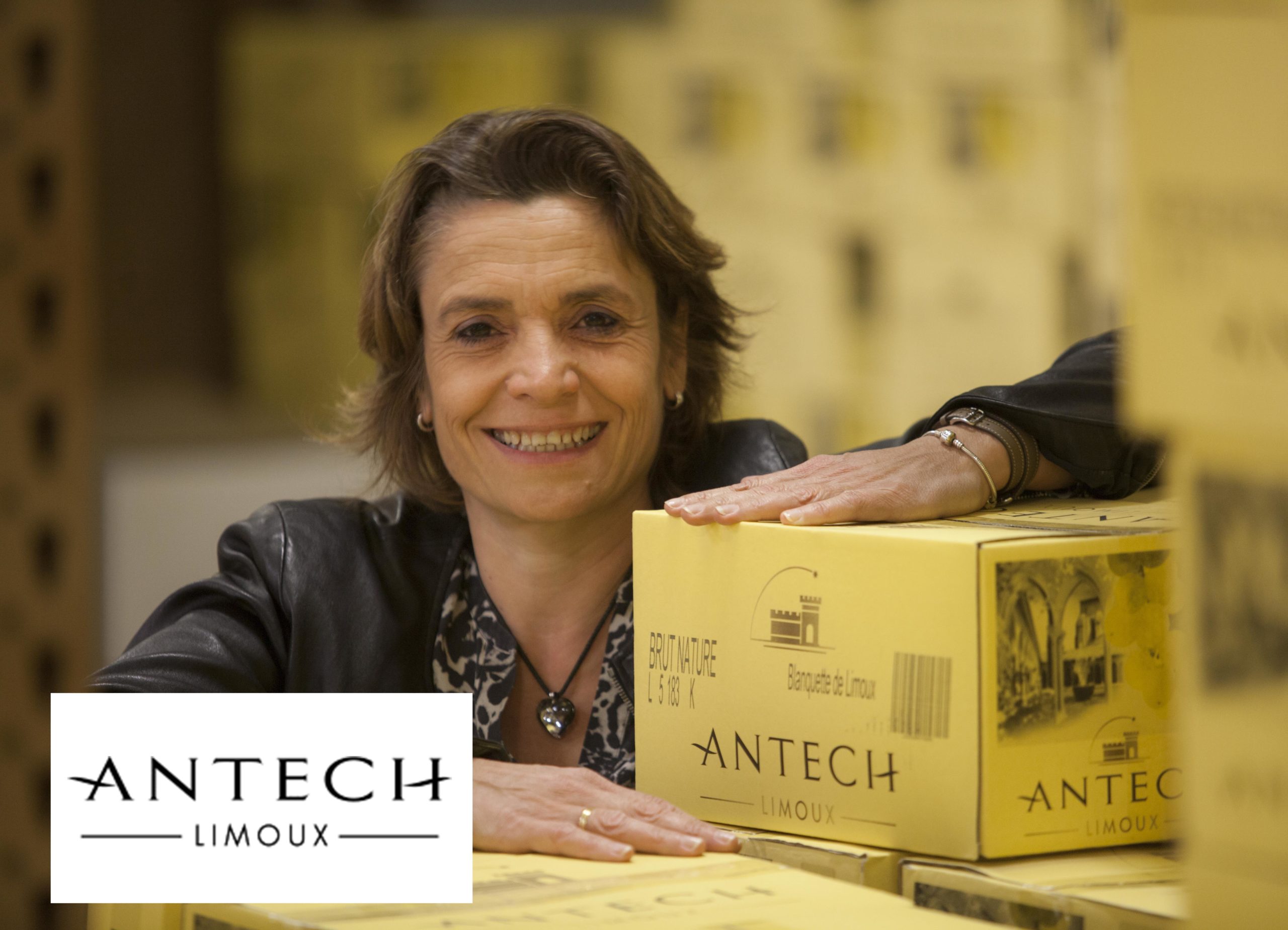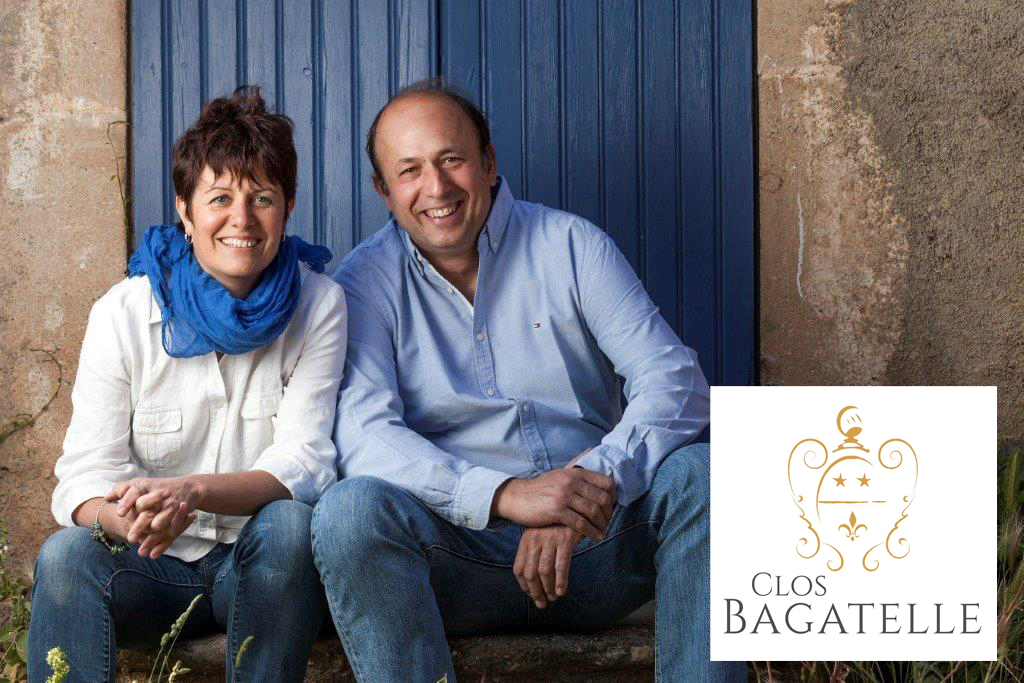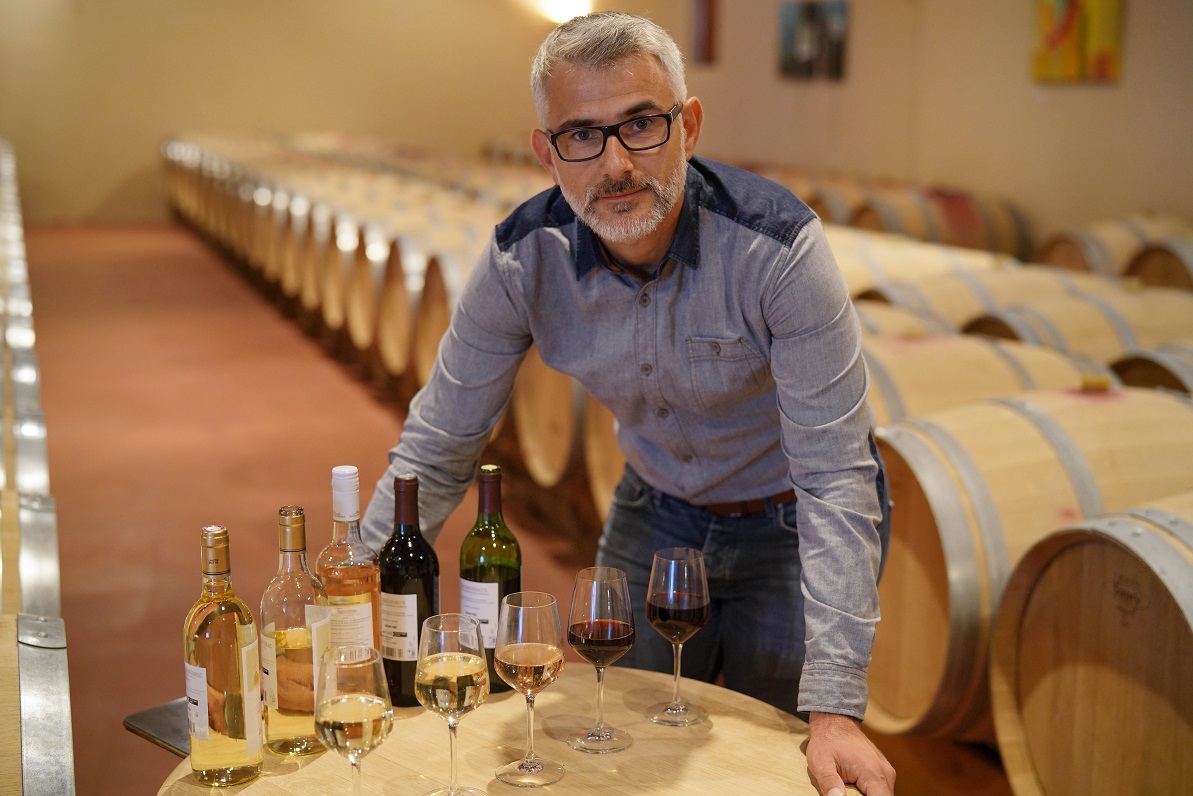LIVE THE EXPERIENCE
PASSIONATE
STORY

Olivier Darras

Minh-Tri Phan

Bruno Coffinières
Break Events Team
This is the story of enthusiasts ….
Attached to the region, to good wines and to the men who work the vines, Olivier Darras, Minh-Tri Phan and Bruno Coffinières wished to perpetuate a major wine event in Montpellier.
For them, one of the largest vineyards in the world must be able to count on a regional showcase to attract national and international buyers. A trade fair which offers all the winegrowers of the Mediterranean basin visibility and proximity to their clients. The opportunity to visit the wineries and the highlighting of wine tourism activities contributing to the growth and dynamism of the business sector and the region. The goal is there.
A trade fair where we share common values of pleasure, authenticity and innovation. A story of enthusiasts dedicated to a sector of activity. A tradeshow serving men and women who, every day, roam their vineyards to achieve excellence.
A 100% Mediterranean fair ….
EXPORT
OF FRENCH WINES
According to the OIV in 2018, global wine consumption was estimated at 246 million hectolitres. Global wine trade reached 108 million hectolitres in volume and 31 billion euros in value. French wines are increasingly appreciated in international markets. According to some experts, two out of five bottles consumed worldwide are French.
Consumption patterns are changing. Between cultural inking and new lifestyles fostered by an overall increase in purchasing power in some countries, new wine consumers are being introduced. They appropriate brands and are increasingly interested in the quality of wine, production methods, wineries.
In permanent contact with international buyers, Break Events, organizer of VinOmed, has seen a strong desire from buyers to be present at this regional event. Also delegations of international buyers will be invited.
WINES
TOURISM OFFER
With several million wine-tourists by year, the economic stakes related to wine tourism are important both in the tourism development of the region and in boosting wine sales. It is, therefore, a key sector for the destination.
Today the traveller is looking for meaning, discussing his stay, looking for new experiences.
Wine tourism is fully involved in this trend. Although wine cellar visits and tastings remain the most common practices, in recent years France has experienced a real revival by the experiences offered by professionals aimed at getting closer to consumers. Wine tourism is a very dynamic sector where development margins are high. The promotion, the strengthening of the quality of the offer, its visibility with the players of tourism offers (tour operators, travel agencies) are necessary prerequisites for any marketing.
Vinomed highlights producers offering services related to wine tourism. They will benefit from a special signage on their stand and on the show plan. Each visitor will be able to follow a real wine tourism route by criss-crossing through the aisles. A dedicated conference programme for producers and all players in wine tourism is also being developed.
A LOOK
AT…
Interview
Séverine Bourrier, Château de L’Ou
A family property since 1998, Château de l’Ou in Montescot , Pyrenées Orientales (66), consists of 65 hectares of vineyards, all grown organically for more than 20 years.
Publication : Break Events Group, august 18, 2021
Interview by: Bruno COFFINIERES
SEE ARTICLE
Portrait of Séverine Bourrier of Château de L’Ou in the Roussillon, creator of elegant wines
A family property since 1998, Château de L’Ou in Montescot , Pyrenées Orientales (66), consists of 65 hectares of vineyards, all grown organically for more than 20 years.
Le Château de L’Ou, 140 000 bottles per year, 70% for export. Wines produced reflect a wide diversity: Côtes de Roussillon Villages, Côtes du Roussillon, IGP Côtes Catalans, Muscat de Rivesaltes, Rivesaltes, Maury, for a total of at least 140,000 bottles annually. These wines (70%) are exported, mostly to North America and Asia. In France, they are primarily sold to wine cellars, restaurants and private clients. A sales boutique welcomes visitors to the domain.
The Château de L’Ou also proposes oenological tours, with one-day circuits based on sensorial discovery. There are active olfactory tours of the vineyards to discover different aromas, tours for touching to discover the sensation of minerality and silkiness, before tastings and a visit to the wineries to conclude these moments of sharing.
Recreating everything, 20 years ago: a beautiful challenge
Séverine Bourrier came back to France from Africa when she was 15 and settled in Bordeaux where she was born. A teacher at school helped her discover the world of wine. After signing up for a training course in wine-growing and oenology, she began her career with a wine-grower in the Entre-Deux-Mers area and went on to manage a cellar in Bergerac.
“My husband bought the Domaine des Pins in 1998. I joined him in 2004. We wanted, first, to give the domain its identity when we renamed it Château de L’Ou. In Catalan, Ou means egg. The locality had taken its name from an ovoid-looking spring on the property. We revived this symbolism of the egg, which made sense. And we began to work, to create from scratch and build the ranges,” Séverine recalls.
At the domain, Séverine supervises the ensemble: vinification, sales, export. “We have a team of nine full-time, salaried employees, two in the cave and for logistics, three tractor drivers and a vineyard manager who follows the workers who tend the vines on foot.” Philippe, Séverine’s husband, is an agricultural engineer who supervises all the agricultural part.
The four large terroirs of Château de L’Ou
The special feature of Château de L’Ou is its four different large terroirs in Roussillon south of Perpignan in Montescot and in the Agly valley : alluvial deposits on the Roussillon plain at Montescot, black schist in the Agly valley at Maury, mosaic schist in the high Agly valley at Saint Paul de Fenouillet, and the black schist and limestone of Caudiès de Fenouillèdes in the high Agly valley. Varietals planted : syrah, black grenache, grey grenache white grenache blanc, carignan, roussanne, viognier, marselan.
The unique wines of the Ou come from these terroirs and these varietals: “We are creators of elegant wines. This is our leit-motiv. We want to transmit everything that we might have received from our terroirs, from our sun-lit region, from this fabulous climate, with a fresh and elegant identity. We are the region of France with the lowest yields and the material is definitely there. One has to accompany the wines, work on the quality. We can produce extraordinary wines,” rejoices Séverine Bourrier.
Getting through the sanitary crisis
When the pandemic hit, the salaried workers continued to work. “We tried to keep active.” Since the boutique at the domain was closed, on-line sales were developed. “Since meetings and trips were not possible because of lockdowns in different places, we sent samples to our clients and prospects. This sampling strategy was time-consuming, but we succeeded in winning over some new clients recently.”
Prices were maintained and Séverine remained cautious at picking time. “The new lockdown of September 2020 made us limit our production of rosés. Whites and reds can age, but rosé consumers want a product from the same year. Obviously, we’re short this year, but that’s just the way it is,” she said. Zoom meetings proliferated and clients were accompanied in a different way, notably through drives. “We reinvented ourselves. We’ve always been very active on social media, as a way to transmit positive vibes.
It has taken some time, but the effort has paid off. We see it today.”
“Our commitments helped us hang on”
Séverine Bourrier belongs to “Vinifilles,“ an association of women wine-makers in Occitanie, and to “Women’s Wines in Roussillon” a charitable organization of women wine-makers who mobilize against cancer. “I try to be active in these networks because they nourish me and remind me of other values. It gives us pleasure to get together.”
She also has formed a group of eight producers from Languedoc-Roussillon, « Passion du Sud,», which came together just before the lockdown. “Eight domains, are an incredible force! I am the only one from Roussillon, with seven from Languedoc. We pool Commercial resources, Sales administration and logistics. Orders are fulfilled in grouped shipments.”.
This group notably created “PassiBus” to go out to meet with clients during tours, in June 2020 and in the Spring of 2021: a mini-bus transported them with their wines to the west and north of France, passing through Normandy. An event was created at each stop at a wine-cellar. “These tours created a dynamic that warmed our hearts. We needed to pack our bags. It was terribly scary to be forced to stay locked up at home. Our clients were able to meet wine-makers who were in top form! Some of the clients were at the end of their rope. Our visits gave them a boost. What’s more, it’s fun to travel together. It enriched us all.”
Maintaining human relationships with VinOmed
“The crisis necessarily modified the ecosystem. Digital technology and on-line sales were developed strongly. It was a turning-point. People at home want immediate responses and, now, this will never change. The way we work has changed. On-line trade fairs have reshuffled the cards, but now we are exhausted. We have become machines with no defenses Our profession has been perverted in terms of time. It is very strange. It would be difficult to go back to a more normal rhythm,” Séverine points out.
“But clients always will need human contact, a telephone call, an email, a visit, a trade fair, they need it. The VinOmed trade fair in Montpellier responds to this need. It will give our clients a chance to go back to working in a little more classic way. It’s great to be able to offer them this possibility. We needed a trade fair in the region, and I know BREAK EVENTS; the organizer really well.
“I am optimistic. I am enterprising. I like that. I don’t know how to stop. Those who made it through this crisis will look at life differently from now on. It could not have been worse. And if we made it through, we can make it through anything.”
______________
It should also be noted that Château de L’Ou was awarded at the international Syrah du Monde competition.
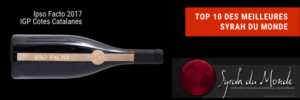
Publication : Break Events Group, august 18, 2021 break-events.net
Interview by : Bruno COFFINIERES
For any additional information or to testify, contact Bruno vinomed@break-events.com
Jacques Bilhac, Syndicat Terroir Pézenas
In the heart of the Department of Hérault, the Syndicat Terroir Pézenas groups almost all the producers of the Languedoc-Pézenas denomination. “We have some 40 members, private and cooperative structures… »
Publication : Break Events Group, july 6, 2021
Interview by: Bruno COFFINIERES
SEE ARTICLE
Terroir Pezenas fine-tunes its communications and will take part in VinOmed
Pézenas in Languedoc
In the heart of the Department of Hérault, the Syndicat Terroir Pézenas groups almost all the producers of the Languedoc-Pézenas denomination. “We have some 40 members, private and cooperative structures. They are spread across 15 villages north of Pézenas,” said Jacques Bilhac, president of the syndicate for the last 15 years. About 700 hectares are planted with vines. Annual production of AOP Pézenas is about 6000 hl or nearly 800 000 bottles per year that are sold on the French market — cafés, hotels and restaurants, large retailers — or exported, depending on the structure. All segments are represented. Entity surface can range from three to several hundred hectares total and from one to some 15 hectares devoted to Pézenas.
Terroir and varieties
In Pézenas, the terroir benefits more from its homogeneous climate — little rain, hot summers, mild winters and a wide range of temperatures — than from its geology. In the areas classified for wine growing in Pézenas, there is a great variety of soil, but three large types stand out: schist, lime and alluvial. Important volcanic formations, volcanic basalt flows, are present in the 15 communities of the denomination. Main grape varieties are grenache, syrah, mourvèdre, cinsault and carignan. “This ensemble gives our wines their silky tannins and a certain finesse. They are very supple, very young, fruity with spicy notes of white pepper and aromatic Provençal herbs. They are exclusively red wines that are excellent to lay down and keep,” Jacques Bilhac added.
AOC classification and regional communication
The syndicat acts primarily to defend the terroir:
“We work to develop recognition of the appellation. Today, we are in Denomination, but preparation of the dossier for recognition of the official AOC classification by the INAO (National Institute of Origin and Quality) is almost finished.”
It is also a matter of regional communication: the Feast of Molière, in a different place every year, is a dinner created by the starred chef Charles Fontes during which guests taste wines in the company of wine growers and makers of the appellation, the Pézenas Summers, in August, where the public discovers the great wines of the terroir with farmers’ fare and musical accompaniment. “We also work with restauranteurs whom we invite every year to an emblematic place in the terroir. In February and March, we conduct vintage promotions with wine merchants. For the organization of these events, we are supported by the infrastructure of the Languedoc ODG, the official Organism for the Defense and Management of agricultural products,” Jacques Bilhac explains.
Emerging from this difficult situation due to the health crisis
“The wine grower resists. This profession can crush us if we are not resistant. We have been through a difficult time. We have to get ourselves out of this situation. Last year, the summer was good and saved the season after being closed for three months. This year, after sales slumped in January, February and March, April and May made up for this dip. Today, the estates welcome more visitors and we hope that the restaurants will recover as well. The weather is good. Orders are flooding in and we have high hopes to be able to work well this summer. As for VInOmed, well, we wish it all the best!”
A trade fair in Montpellier? I think it’s a great ideal
In the course of our work, the Syndicat regularly takes part in trade fairs. It participated in VINISUD when it took place in Montpellier: “Lots of small structures did not necessarily have the financial means and the sales capacity to follow this fair when it became centralized in Paris. Paris is necessarily more expensive. As soon as you have to travel long distances, it costs money !
“The fact that VinOmed will be in Montpellier made us take the plunge. In Montpellier, we will not have travel and lodging expenses. A Regional subsidy has helped us with its RELANCE VITI contract. A product of the pandemic, this contract makes it possible to absorb the cost of attending this trade fair. So, we will all be there with a collective stand of eight wine growers. There has been enormous interest. We have had to turn people away.
“Ever since I learned of the existence of this VinOmed trade fair, I had a good feeling. It seemed that it could help our viticulture to develop. It is surprising that there are so few professional trade fairs for wine in the largest wine growing region in the world. Expectations vary but we offer group visibility because we want to be known. Everybody has their own objectives, but it all boils down to penetrating more markets,” Jacques Bilhac concludes.
Publication : Break Events Group, july 6, 2021 break-events.net
Interview by : Bruno COFFINIERES
For any additional information or to testify, contact Bruno vinomed@break-events.com
Interview
Françoise Antech, Maison Antech in Limoux
At Limoux, in France’s Aude Department, Françoise Antech leads Maison Antech with rectitude and rigor, plus a touch of fantasy and innovation.
Publication : Break Events Group, june 7, 2021
Interview by: Bruno COFFINIERES
SEE ARTICLE
At Limoux, in France’s Aude Department, Françoise Antech leads Maison Antech with rectitude and rigor, plus a touch of fantasy and innovation.
Limoux sparkles in the Aude
Maison Antech is a family enterprise managed today by the 6th generation of the Antech family “Very often, the Maison has been transmitted from one generation to the next by women, except in my case,” said Françoise Antech. “I picked up the torch handed down to me by my father and my uncle 25 years ago. Baptiste, my 25-year old son, has just joined me to continue the adventure.” Based in Limoux in the Aude, Maison Antech produces sparkling wines of quality: AOC Limoux, Crémant de Limoux, Blanquette de Limoux and AOP Méthode Ancestrale. Every year, 800 000 bottles are produced, 70% of which are exported to some 30 countries. “Export has been an expanding market for the last 15 years. We sell in the US, Canada, Japan, Northern Europe — Italy is a very big market. In France, our wines are essentially sold through traditional channels, with some in mass retail,” Françoise Antech explains.
The terroir is 80% wine
Maison Antech exploits its own vines, 20 hectares at an altitude of 400 meters and also buys grape from about 15 wine growers of the same appellation. With the Mediterranean on the left, the Pyrenees in front and the Atlantic Ocean on the right, the terroir of Limoux is at the heart of three climate zones on the watershed between sea and ocean, enriched by the drainage divide (seuil) of Naurouze. “The terroir is 80% wine. Our wines are the result of an alliance between Mediterranean roundness and the freshness of the Pyrenees. For sparkling wines, this is extremely important. The combination of the Languedoc region, the Mediterranean and the Atlantic Ocean gives our wines their magnificent freshness and the tension necessary to develop great sparkling wines. Natural acidity comes from the altitude, exuberance from the Mediterranean and characteristic body, flavor and color from the Ocean,” she adds.
A smooth transition for a woman with a commitment
After some time at L’Oréal for the export of perfumes and cosmetics, Françoise Antech returned to her family’s domaine before she was 30: “Limoux is the most beautiful place in the world. My life is here.” She wanted to pursue the adventure and to do so, she was accompanied for 20 years by her father and her uncle. ”A stroke of luck and a very gentle transmission of know-how that allowed me to express myself while remaining the guarantor of the classic family heritage : wines made with rectitude and rigor. I also have my UFOs: I like to make different wines, less classic, with more fantasy.” Director of Maison Antech, vice-president of CIVL (Inter-professional Council of the Languedoc AOCs and IGPs of the South of France), active member of Vinifilles (Association of Women Winemakers in the Occitanie Region of France), Françoise Antech makes contacts, prefers to share and is committed: “I like to network. These commitments are important: the CIVL shares savoir-faire to show-case the Languedoc. Vinifilles allows us to share competences and experience while we help each other. These encounters enrich me and nourish me and I try to provide all my support in return.”
The Covid 19 Lockdown made us all stop and think
March 2020 : “A nightmare, two and a half months with no light at the end of the tunnel, sales revenue going down, worry about getting sick…It was not easy to fulfil my responsibilities as head of the company. But, again, I was lucky because, on March 15, my son came to join me. This gave us a renewed sense of optimism. We had to rethink everything. Reorganize departments, product lines, packaging, marketing, new still wine vintages, launch of PARDI, our co-created spritz…without the lockdown, none of this could have been done,” Françoise Antech recalls.
Then the enterprise re-opened. Clients came back with new orders. Cafés, hotels and restaurants. Certain export markets, like the US, were re-supplied: “Recovery has started off really strong, positive pressure has returned, optimism too and it feels so good!” Well before the crisis, this market segment for effervescent drinks was growing rapidly, notably for export: “France is a mature market for our sparkling wines, while development in export markets is huge. As more and more countries appreciate these wines, there is a rise in price range, thanks to the advantage of French traditional methods.”
PARDI, a real spritz « à la française » and so very good !
So PARDI, the spritz à la française is born of the association of Maison Antech and Kina Karo who have brought their own know-how to create this refreshing blend of the aerial bubbles of Limoux and a spicy liqueur made from Corbières. “In March 2020, we told ourselves that there was no reason why café terraces should be left to Italian spritz.” By October, the structure was in place and the first deliveries to wine merchants and restaurateurs went out in March 2021. “Results exceeded our expectations and we sold out very fast. PARDI is 100% natural liqueur obtained from the maceration of plants, associated with an extra dry effervescent. PARDI is less sweet than the usual spritz, without added colorants or artificial aromas. It checks out on several fronts: it’s local, natural, clean and its colorful packaging is invigorating. What’s more, and most important, you know what? it’s really good !,” Françoise Antech adds.
Digital will not replace the rest: find the client, go to the fairs !
“During this health crisis, digital technology allowed us to keep in touch and to work certain markets. Everybody was trained here, with us. But in my opinion, digital expertise cannot replace the rest. Digital skills can make a first contact or help to touch base with regular contacts, but, as soon as possible, I will jump on the first plane that can take me to meet them. We are in a hurry to meet our contacts, to renew our ties and to offer our wines for tasting. Wine is sharing.”
Maison Antech will be present at VinOmed, 25 and 26 October, on the Vinifilles stand and on the stand of “Passion du Sud” (“Southern Passion”), a group of eight wine growers created during the lockdown, a virtuous circle for distribution, with the objective of putting their combined forces together with a data base so that cafés, hotels, restaurants and wine merchants in the French department of Vendée, outside the Occitanie Region, can access 120 references and make a group order.
“What joy! Finally, a trade fair ! A dream come true ! VinOmed will be the first time in a long time that we can meet the client and communicate directly. We will be able to work regionally once again. Trade fairs offer atmosphere and the opportunity to exchange experience. It is enriching. We will be ready for VinOmed. October is a good time for year-end orders. It is an ideal date.”
Publication : Break Events Group, june 7, 2021 break-events.net
Interview : Bruno COFFINIERES
For any additional information or to testify, contact Bruno vinomed@break-events.com
Interview
Christine Deleuze, Clos Bagatelle in St-Chinian
« Wine… I fell into it when I was little ». With her usual frankness, Christine Deleuze shares her recipe: a zest of creativity, a pinch of passion, always guided by the pleasure and clear thinking required by the times.
.
Publication : Break Events Group, may 3, 2021.
Interveiw by : Bruno COFFINIERES
SEE ARTICLE
Clos Bagatelle in Saint-Chinian: when wine rhymes with pleasure, passion and innovation
“Wine… I fell into it when I was little.” With her usual frankness, Christine Deleuze shares her recipe: a zest of creativity, a pinch of passion, always guided by the pleasure and clear thinking required by the times.
Generations of female winemakers
Clos Bagatelle, that she manages with her brother Luc Simon, is a family domaine transmitted from mother to daughter and one generation to the next for 100 years. The estate itself is very old. As far back as 1623, it already belonged to a woman, a countess. “We found her seal, an oval carved into a wall of the cellar.” Christine and Luc belong to the 5th generation and the 6th is on its way since Mathieu (age 27) and Marie (age 22) already are part of the family enterprise. “Slowly, transmission from one generation to the next takes place and it’s interesting. We are galvanized,” Christine exults.
60 ha et 380 000 bottles marketed annually in France, Europe, Canada and Asia
The 60-hectare domain extends over four different terroirs. Three are recognized by the appellation Saint-Chinian : the origin lots of the Lauze, in the cleft of the Valley, with limestone clay soil; the lots of Donnadieu on hillocks made of schist and the lots of Assignan, composed of terraces at an altitude of 250 meters with sandy soil, plus 8 ha of muscat at St Jean de Minervois. “We produce 380 000 bottles per year of red, rosé and white Saint-Chinian and Pays de l’Hérault, Muscat Saint Jean de Minervois and IGP Pays de l’Hérault. 50 to 60% of our production is distributed for export, principally to Canada, in Europe and Asia (Japan, South Korea and China.) In France, our wines are sold through traditional channels, cafés, hotels and restaurants (CHR),” Christine Deleuze adds.
Take the time, think long-term
Christine and Luc took over the family estate after their mother died. They are complementary. Luc manages the work with the personnel in the vineyard and the cellar. Christine arrived in 1994, after having taught marketing. She handles the sales end and manages the estate. “This profession is absorbing and you have to have the fiber of a winemaker and a farmer. You have to create, innovate, think and manage for the long term. Grape-bearing vines are plants that should last a lifetime, a generation, and wine is a living product. You have to be combative and perseverant over the long term. You have to give yourself time. Because it takes time to acquire a reputation. You have to build it. That’s the charm of this profession: one learns with time,” she says.
Elegance, femininity, freshness
“How to define our wines? They are just the best!” says Christine with a big smile. “We develop 15 to 20 cuvées per year. Our wines are our children. Each one has its own personality, particularity and character. Overall, we are guided by pleasure and feeling, and our know-how has become more and more recognized over time. Coming from wine lovers, our clients, this recognition gives us great pleasure. They tell us: our wines are notable for a certain elegance, a feminine side and freshness, even from our powerful top-of-the-line.”
The health crisis changed everything
“In March 2020, faced with a blank page, we had to really stop and think,” Christine remembers. “What to do? We decided to re-focus on production. I began to prune vines, alongside our workers. There is no social distancing in a vineyard. Then, little by little, everything fell into place. We prepared for post-COVID. After 25 years of export, I knew where to go. I knew that the market would pick up. I also canvassed the US, with nice results.”
A market that is constantly evolving
“Our clients have changed. Our local wine merchants’ clients were slumbering. Those neighboring stores have brought themselves up-to-date. They now take pleasure in introducing new clients to our wines, different clients who want informed advice and a human relationship. Today, consumers are not afraid to try all types of wine: new discoveries for the evening, a beautiful bottle for a special meal, white for an aperitif on the weekend. Wine is slowly regaining its place. One discovers, one learns. During this strange period, downtown wine merchants managed to survive. We have a wine cellar in Brittany whose sales grew nicely in 2020 compared with 2019.”
And a profession that is evolving too…
“But this evolution is not just since the crisis. It goes way back!
From now on, we have to show that we work properly. It is a commitment for us. Standards change: conversion to organic agriculture, the AB label, high environmental value certification, biodiversity — no vineyard can resist. Wines themselves must become easier to digest, fresher, more adapted to the consumers of today. We are able to respond. Our region allows us to adapt, to innovate. Other than varieties with an appellation like small grain muscat, Grenache, cinsault, carignan, mourvèdre and syrah for the reds, we also grow varieties from outside our region, cabernet franc for certain local wines, roussanne and the very rare white carignan. We also test new varieties that are more resistant to climate change, like the Greek assyrtiko, verdejo from Spain, Portuguese alvarinho for the whites.”
Methods evolve but there is nothing like personal contact, the only moment when time comes to a stop…
“During the lockdown, I participated in on-line presentations, with sommeliers, in English, in front of my computer with an audience of 40 people. Not at all easy. Reassessment is always interesting. As are visio-conferences: 10 minutes to present and offer tastings, another unusual exercise. But there is nothing like an actual meeting, which makes it possible to work more in depth: a visit to the client, or a client visit to the winemaker or a meeting at a nearby professional trade fair. We live in a world of personal contact. A trade fair allows personal contact to take place. It is the only moment in our professional life when time comes to a stop and everyone gets together.”
VinoOmed, an opportunity in October in Montpellier
“2020 might have been a difficult year, but we focused on quality and the bottom line. We moved around less and we did not do any trade fairs. When the organizers of VinOmed contacted me, I said, ‘Not another trade fair!’ But upon reflection, I saw an opportunity! A regional trade show nearby! The date is interesting, too. The weather is still good in October. Rosés bottled in January and February taste better. Most of all, it is an opportunity to actually meet. Something we all need!” adds Christine Deleuze.
Vinodixvins
Christine Deleuze recently joined a group of eight domains in Languedoc Roussillon that guarantees professionals the commercial comfort and logistics that they need. Under the name VINOXDIVINS, “We will exhibit at VinOmed to meet and make ourselves known in the vicinity of our production sites. VINODIXVINS, consists of eight domains. In AOC : Corbières, Côtes du Roussillon, Côtes du Roussillon Villages, Tautavel, Languedoc Grès de Montpellier, Languedoc Montpeyroux, Muscat de Frontignan, Muscat de Mireval, Minervois, Rivesaltes, St Chinian, Pic Saint Loup. In CRU (vintage) : Minervois La Livinière, Maury, Terrasses du Larzac and in IGP : Hautes Rives, Saint Guilhem le Désert, Côtes Catalanes, Oc,…. A beautifully variegated range, group shipments, one single sales point. VinOmed will be our first trade show of the year! “
Publication : Break Events Group, may 3, 2021 break-events.net
Interview by : Bruno COFFINIERES
For any additional information or to testify, contact Bruno vinomed@break-events.com
Online
VinOmed becomes a digital tool !
From April 12, wine producers and wine tourism players participating in VinOmed will be visible for free on a dedicated platform. They will be able to present their wine products and wine tourism services, guaranteeing visibility and exchanges despite the health context.
Publication: Break Events Group, February 2021
SEE ARTICLE
Since large gatherings remained suspended due to the sanitary situation, VinOmed, a 100% Mediterranean wines and wine tourism fair, will take place on October 25 and 26, 2021 in Montpellier. The show will nevertheless continue, from April 12, by becoming a digital tool, open to professional buyers until the date of the physical show. In this way, we guarantee producers visibility and prolonged exchanges despite the sanitary context.
From April 12, wine producers will be visible for free on a dedicated platform where they will be able to present their wine products and wine tourism services.
Regularly and for several months, this platform will be relayed to all professional, national and international visitors: wine merchants, restaurateurs, distributors, importers, wine tourism players, media … They will be able to consult the offers and directly solicit the producers for more information or sample request.
On October 25 and 26, 2021, the winegrowers meet their customers and prospects at the face-to-face show in Montpellier.
They benefit from visibility over several months included free of charge in the initial participation. To take advantage of it from April 12, registration must be validated before March 10. Beyond that date, registrations remain open up to one month before the physical fair, but the sooner the registration is validated, the sooner they will join the online platform for extended visibility.
The appellation unions, many of which are motivated to bring their producers together on VinOmed, are already aware of this change and support it.
Break Events Group publication, February 2021 break-events.net
For any further information, the VinOmed team is at your disposal. They can assist you in this process in order to take full advantage of this digital tool made available to you free of charge.
Climate change also threatens rosé wines
SEE ARTICLE
Does global warming and its procession of droughts and extreme heat threaten the production of rosés, their finesse and freshness? From Provence to the Loire Valley, via the Rhône or Bordeaux, producers are preparing for these new constraints by working on the introduction or reintroduction of more resistant grape varieties and by modifying the farming practices in the vine . Ironically, rising temperatures and extended heat periods are almost assets for rosés, wines that are particularly popular in the summer, even if their consumption tends to extend throughout the year.
World rosé production has grown by more than 30% in 15 years, despite a decline in 2017 (up 10%) due to low harvests in Europe (Spain, Italy and France, three countries that produce more than half of the world’s rosés). On the consumer side, the trend is even stronger, revealing an increase in volumes of almost 30% between 2002 and 2017, with a decrease in appetite for sweet rosés offset by the success of dry rosé wines. Demand is so strong that, for the third year in a row, production is not enough. According to the Observatory, the deficit in 2017 would be 3.2 million hectolitres, for an overall production of 20.3 million. This situation also concerns France, which is still the world champion in the production and consumption of rosés.
« We’re trying to develop production space because we can’t meet the demand. Between 2017 and 2020, 750 hectares are planned for the extension of the appellation area of the Provence coasts. But competition is fierce between urban, wine and wooded spaces, especially in the Var, » explains Brice Eymard, director of the Interprofessional Council of Wines of Provence (CIVP), in this region that has made rosé its calling card (90% of wines products).
New food and health expectations – less alcohol and less sugar – also seem to encourage the consumption of lighter wines. And the rosé is well positioned to respond.
Especially popular with young people, rosé (like white) benefits from the relative dislove for red wine. In Bordeaux, after a fairly clear increase, since rosés accounted for 1% of the volume of wines some thirty years ago and 4% today, or 26 million bottles a year anyway, production remains stable. In a vineyard devoted first to reds (84% of production in 2018) and then to whites, rosé is not anecdotal. « With the decline in appetite for reds, you have to be able to offer quality rosés. For this, we have late grape varieties that work well, such as cabernets francs and sauvignons, » says Bernard Farges, president of the upper Bordeaux and Burgundy AOC union and the rosé burgundy AOC.
The aim is to regain market share in Provencal rosés, which dominate even in restaurants on the Atlantic coast, in tourist spots such as the Arcachon basin or Lacanau. « We have to work to be better known, better tasted and bought better, » insists Bernard Farges, who recalls the ancient history of this colour, since it dates back to the Middle Ages, with the French claret – much appreciated by the English, it was actually a matter of a light red.
Another major producing region, the Loire Valley boasts an increase in the consumption of its tender and dry rosés. « We strongly intend to develop dry rosés in the Loire Valley, from Nantes to Blois, and some red producers may be moving towards rosés, as feeding patterns change, with wines that will be bus off meals or for to accompany lighter dishes, » says Laurent Ménestreau, president of the Anjou Saumur Wine Federation and chairman of InterLoire’s economics and foresight committee.
New food and health expectations – less alcohol and less sugar in wine – also seem to encourage the consumption of lighter wines. And the rosé is well positioned to respond. Provided, however, that its characteristics are retained. « Clear colour, fruity aromas, finesse and freshness are what the vast majority of buyers are looking for. All regions, while maintaining their characteristics, want to meet this demand, » professes Gilles Masson, the director of the Rosé Centre, in Vidauban (Var). However, it is precisely these qualities that are threatened by climate change, with too much drought and warmer heat that alter the ripeness of the grapes. « Before, we reached 13 degrees on September 15, now it’s August 15th. Of course, you can harvest earlier, but that doesn’t solve the problem. It’s not just about sugar. Rosé is a very sensitive balance, which certainly takes into account sugar, but also acidity, polyph[molécules qui sont à la base des tannins, notamment]enols, color pigments… explains Gilles Masson.
« The threats are already there, with drought in some years, but also hailstorms, late frosts, heavy rains, sanitary pressures… In the years when these vagaries are rife, about 15% of losses are recorded. Brice Eymard, CIVP
In the vineyards, most winemakers are already working to counter the changes that are taking place. At the Castle of Bern, in Flayosc, in the Var, the winemaker confirms the analysis. « The rosés of Provence appeal for their balance in the mouth and their color, of course. At the Château de Berne, we don’t look for the exuberant side, we want finesse. And we have a problem by harvesting earlier and earlier, which means in August, because the nights stay warm and the grapes need freshness after the heat of the day, » says Alexis Cornu, who has been working on the problem of global warming for three years. I’m not going to do that.
By nature, the winemaker, and the farmer in general, faces the vagaries of nature. And the wine regions have adapted, empirically at times, to the changes that have already taken place. Because climate change has various effects. « The threats are already there, with drought in some years, but also hailstorms, late frosts, heavy rains, sanitary pressures… In the years when these vagaries are rife, we record about 15% losses. And, in the last ten years, four have been marked, » confirms Brice Eymard of the CIVP. So winemakers have no choice but to change some of their practices. The solutions exist, not all elegant, such as de-alcoholization or acidification, explains Gilles Masson. According to him, it is necessary to work upstream, « to return to nature, to adapt to climate change »: « We must revisit the way the soil and the foliage of the vine work, to protect the clusters from hot strokes, with shade trees, orientation and row spacing, mixing with other cultures or experimenting with new size techniques. »
These tips are of course valid regardless of the color of the wine. But for rosé, which claims freshness, the stakes are essential. New, more resistant grape varieties could also come to the rescue to cope with current and future conditions. In Provence, for example, caladoc and rousselie are tested. The Château de Berne set its sights on the latter, excluded from the appellation in the 1960s because it was considered too late and too quantitative. Once called the Roussanne du Var – although it is not related to the Roussanne – or rosé from the Var, this grape with fleshy berries could be reintroduced into the specifications of the Côtes-de-Provence. « It’s not very aromatic, but it’s a great complement. Rousselie brings a certain sapidity, an indispensable presence in the mouth for our rosés, » says Alexis Cornu.
Beyond taste, the main challenge is to be able to continue to produce, as Gilles Masson developed at the International Rosé Meetings held in Marseille on 22 January: « If we don’t change anything, the main risk is the decline yields and the fact that the variety and typeofness of rosés are no longer identified. »
Don’t hesitate to come and discover on Vinomed the rosé wines of our producers
Excerpt from: The Monde.fr Article published on 02 July and written by journalist Rémi Barroux. https://www.lemonde.fr/m-gastronomie/article/2019/07/02/le-changement-climatique-menace-aussi-les-vins-roses_5484367_4497540.html
A journey into the heart of the vineyards
SEE ARTICLE
In France, wine regions are major tourist destinations that offer a wide variety of products. A third of tourists cite wine and gastronomy as the reasons for choosing a stay.
The issues related to the economy of wine tourism are important both for the increase in the number of visitors to the wine regions and for stimulating the sale of wines. It is a key sector for the destination that carries within it the values of the art of living, the quest for meaning, exchanges and experiences, in perfect coherence with the current expectations of tourists. It is a promising market both economically and culturally, with the vineyard playing an undeniable place in France’s image and reputation abroad.
Between the Mediterranean and the Pyrenees, Roussillon is open to you infinitely!
With 320 days of sunshine a year, 40 kilometres of sandy beaches, mountains and vineyards as far as the eye can see, Roussillon offers a heavenly environment to taste its red, white, rosé and famous natural sweet wines.
Rich in landscapes with many facets, Roussillon invites you to recharge your batteries by revelling in its local products and its great wines. Between land and sea, Roussillon enjoys a sunny, warm climate, conducive to the cultivation of vines. It is an amphitheatre open to the Mediterranean to the east, bordered by three massifs: the Corbières to the north, the Pyrenees with Mount Canigou to the west and the Alberes to the south. The plain is drained by three rivers: the Agly, the Tet and the Tech.
Neophyte, connoisseur or simple curious, take the wine route of Roussillon, practice… and become experts! Explore the vineyards and visit roussillon’s winemakers, traders and cooperative wineries, where you can taste exceptional wines.
Grenache black and white, carignan, syrah, macabeu… A total of 23 grape varieties grow on various soils and are included in the composition of 14 PDOs and 3 PGIs. There is therefore not a vineyard, but vineyards in Roussillon and a rich and diverse range of wines with each its specificity, personality and place in the world of gastronomy…
Meet the roussillon producers at Vinomed.
Excerpts from: AtoutFrance.com/Oenotourisme AND visitfrenchwine.com/visiter-vignoble-du-rousillon_oenotourisme

